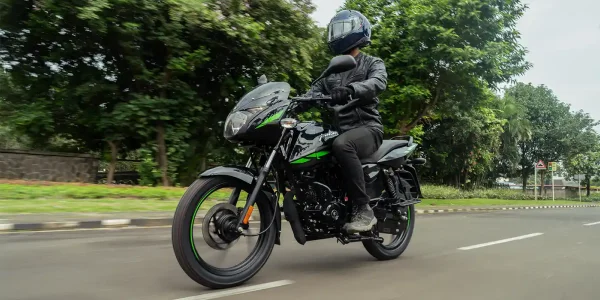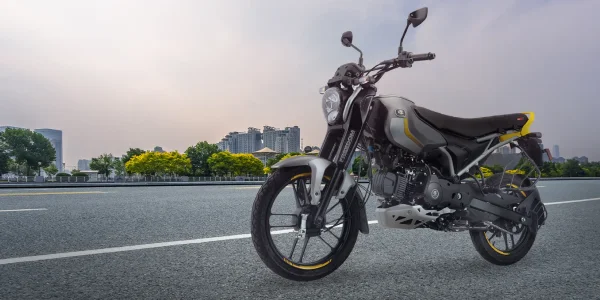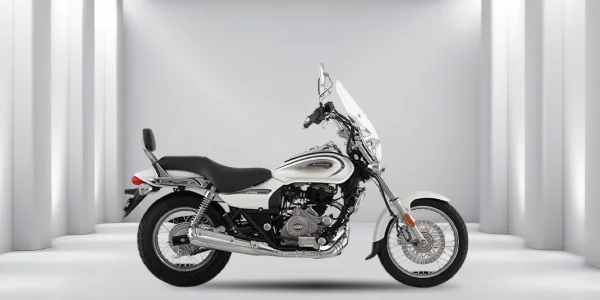 Back
Back
Last Updated: Feb 15 2023, 11:30 AM IST
How to Adjust Suspension on Pulsar 150
Bike suspension is an essential component. This system's front and rear parts perform a great deal of work, delivering comfort and stability during the ride and adding to safety in terms of handling and braking. However, does your Pulsar 150 suspension function optimally for you?
The suspension on the Pulsar 150 is managed by telescopic forks in the front and has five-way-adjustable Nitrox shock absorbers in the rear. Almost certainly, it has the same features as the Pulsar NS 200.
Pulsar 150 suspensions may be intimidating to work on, but if you adjust them correctly, you will almost surely improve the bike's ride and handling. Standard suspension adjustments on the Pulsar 150 are determined by the average weight and riding style of all riders, so customizing it will naturally enhance your experience.

You can also witness increased ride comfort and cornering performance in most conditions without changing fork spring rates or shock absorbers. On the Pulsar 150 with active suspension technology, the bike can do this automatically, allowing riders of any riding posture or style to get on and go.
Follow this method to determine your optimum suspension arrangement, considering sag, compression, and rebound, and then enjoy your newly personalized Pulsar 150.
Setting the sag :
Sag refers to the point of the suspension at the apex of the stroke. With 120mm of the front suspension system, 40mm of rider sag is optimal in thePulsar 150. Place your bike on a flat surface for measurement. Utilize a cable tie, compress the forks, allow them to settle, and then force the cable tie up against the outer dust barrier. Next, take your weight off the front wheel so the forks are fully extended. The gap should be between 6 and 12 mm without a rider, and with a rider, it should be between 35 and 50 mm. To change the preload, turn the spring collar downward to lower and upward to enhance sag.
Reconfiguring the Rebound :
Adjusting the rebound in Pulsar 150 is a little more subjective than establishing the optimum preload, which requires using certain information. Your best option is to begin by documenting your present settings so that you understand where you are starting from. You must take care of this adjustment as it has among the most significant effects on the bike's handling.
- After you have recorded your current settings, you must determine the number of "clicks" on your adjustment knob.
- Start by twisting the knob clockwise to the extent that it will go and then turn it counterclockwise to the opposite end while counting clicks.
- Once you get this number, you should position the knob in the middle.
- It is readily accomplished by reducing the number of clicks and reversing that amount.
- To reach the centre of a knob with 30 clicks, you would turn it 15 times.
Modifying Rear Rebound :
It affects the rate at which the shock expands following compression. If the bike seems sluggish in corners, adding a rebound might assist. However, if the bike bottoms out over undulations in turn or feels rough over bumps, decreasing the rear rebound damping might also be beneficial. The adjustment is positioned near the base of the shock.
Modify the Compression :
Some shocks do not have compression settings, but for those that do, you may alter how the bike absorbs bumps and brakes. Here, count the total number of clicks on the knob and use that number to locate the knob's centre before giving it a test drive.
Raising or Lowering the Ride Height :
Now that all other components are in place, it is time to determine the ride height. This option can affect the overall handling of some of the bike's comfort features. To get this impression, you will modify the rear. It is feasible due to a variable eye on the shock, which allows you to alter the length to fit your Height.
Final Words
The best approach to determining the effects of the modifications is to ride the bike under repeatable settings, for example, a track day. Change one feature at a time, observe how the bike feels, and take notes. Obtaining a base setup from a suspension professional and then modifying it is not a terrible idea. Please increase your speed gradually since your bike may feel different after each adjustment and may require some time to get used to it.
Recent Articles
Best Sports Bikes Under 1 Lakh: Top Picks for Budget-Conscious Bikers
Know More
RS200 Top Speed: Pushing the Limits of Speed and Power
Know More
Bajaj Pulsar N250: The Ultimate Sporty Cruiser for Enthusiasts
Know More
Pulsar N160: The Perfect Balance of Power and Performance for Bikers
Know More
Pulsar N250: A Powerful Ride for the Modern Biker
Know More











































































